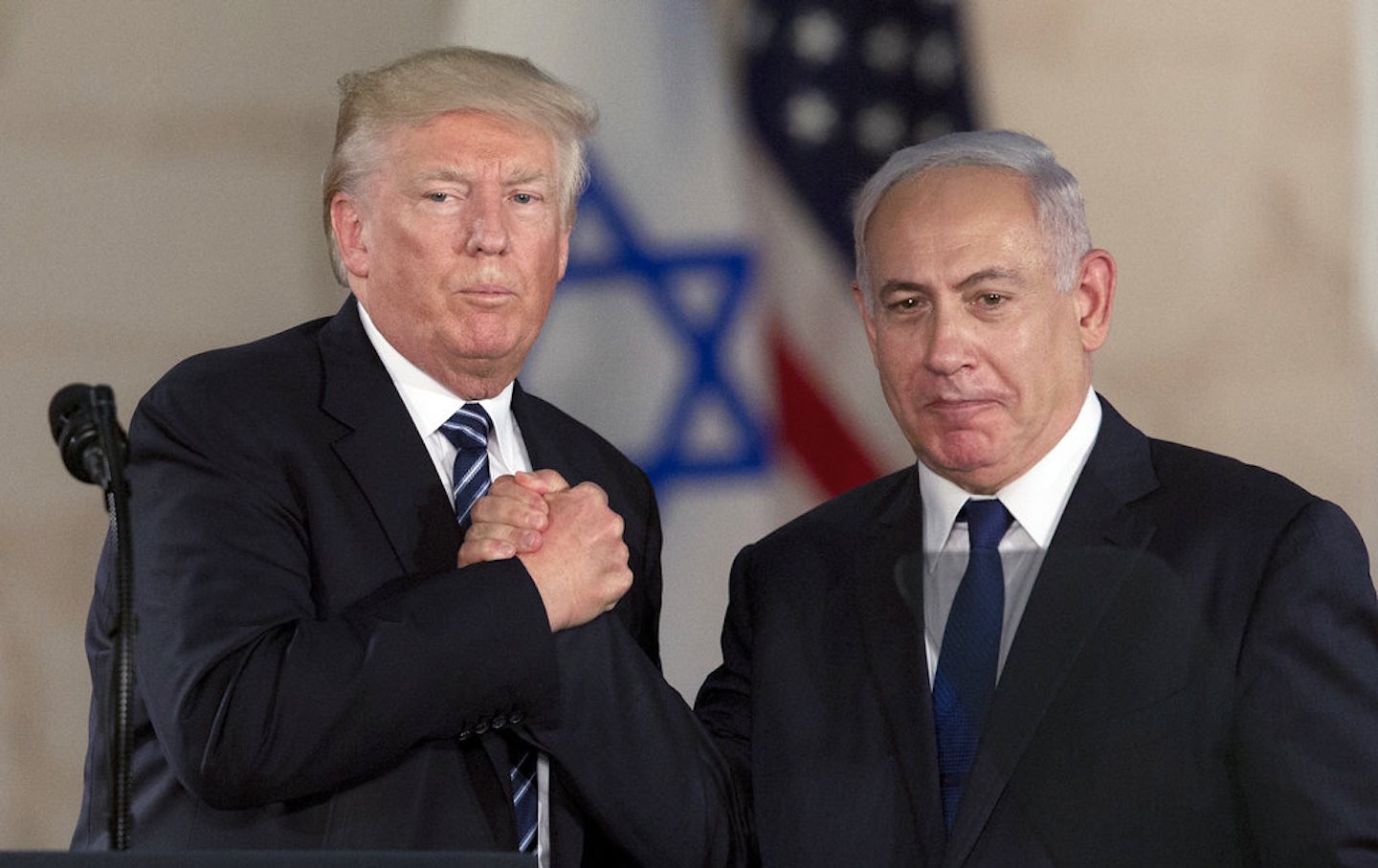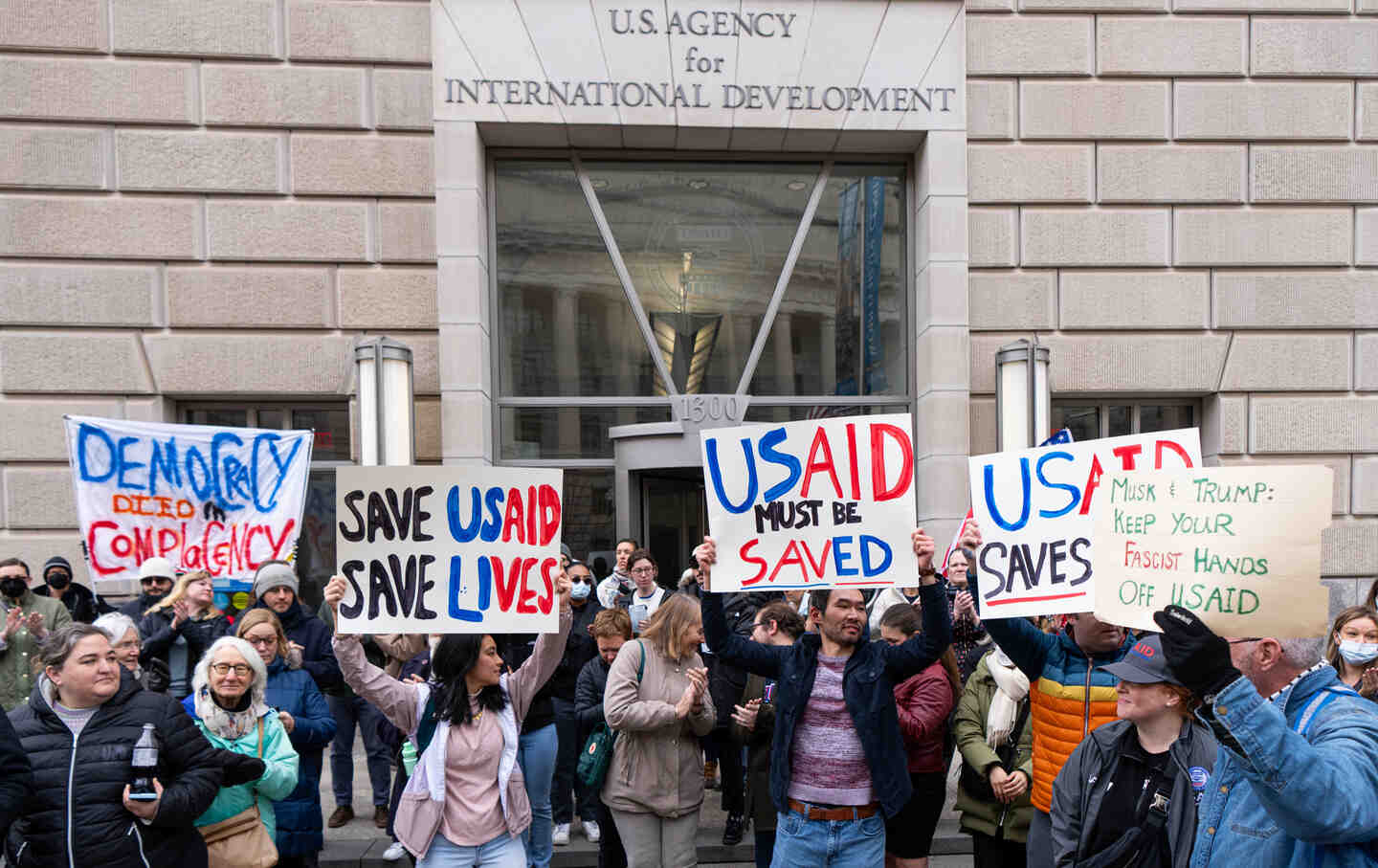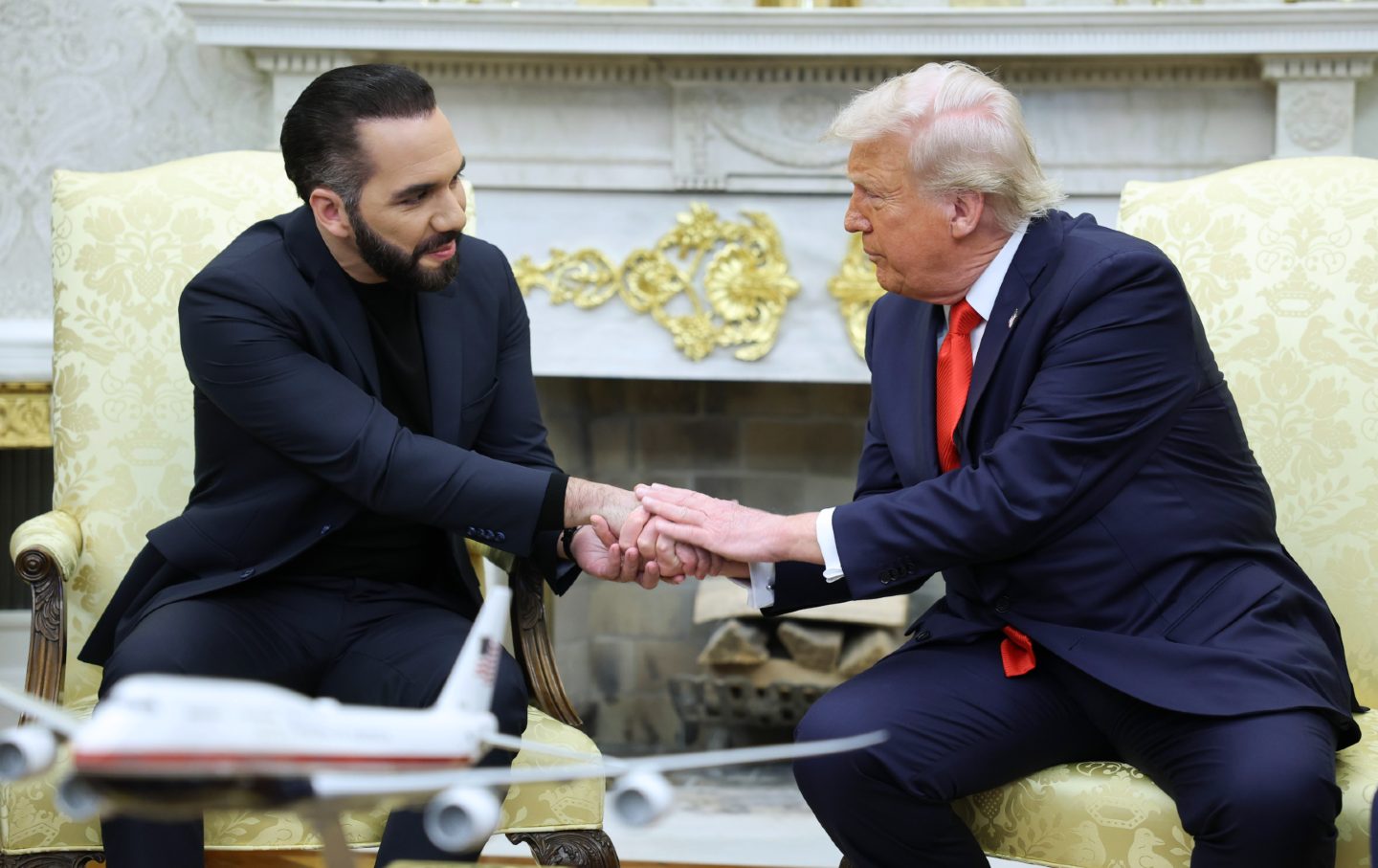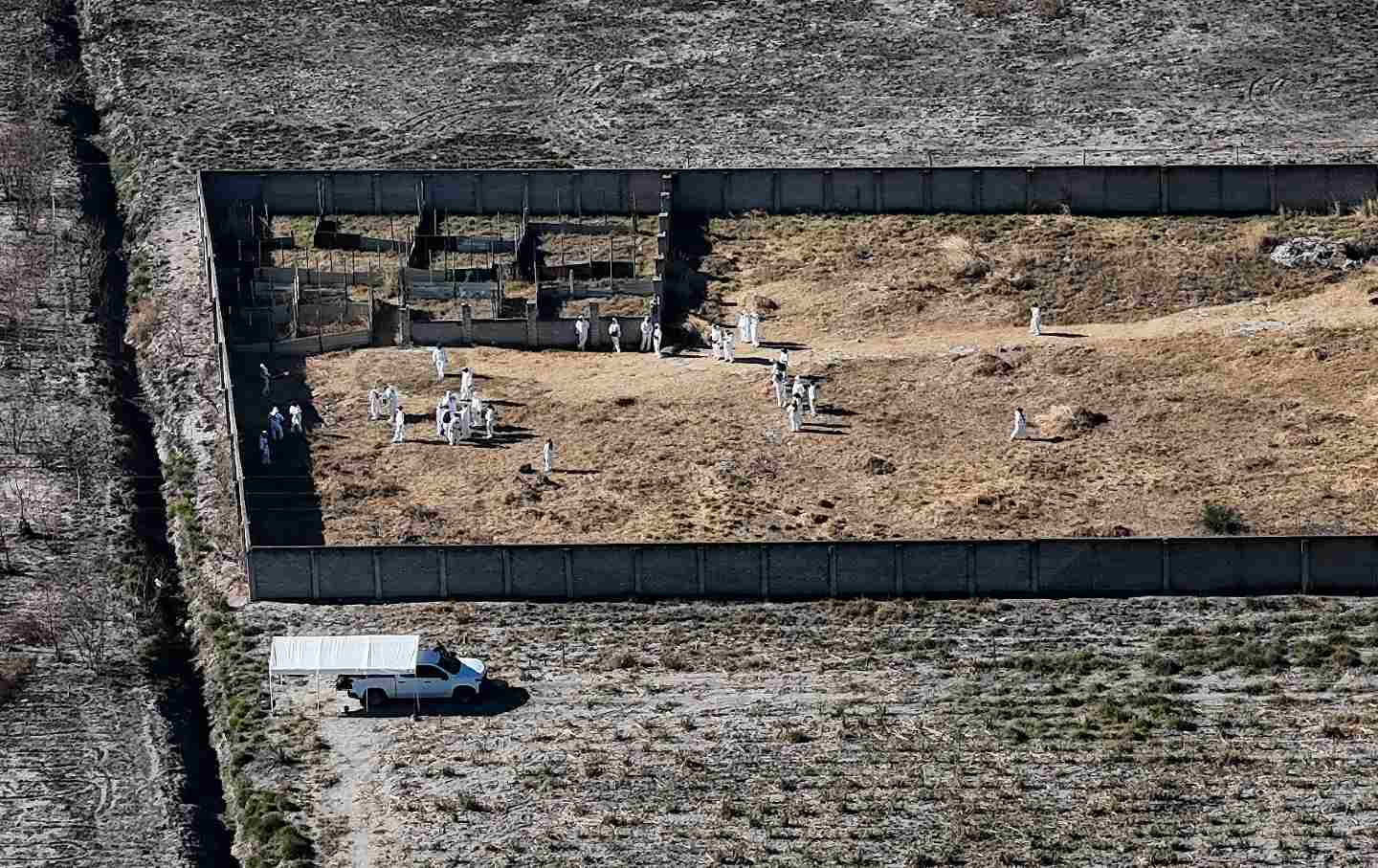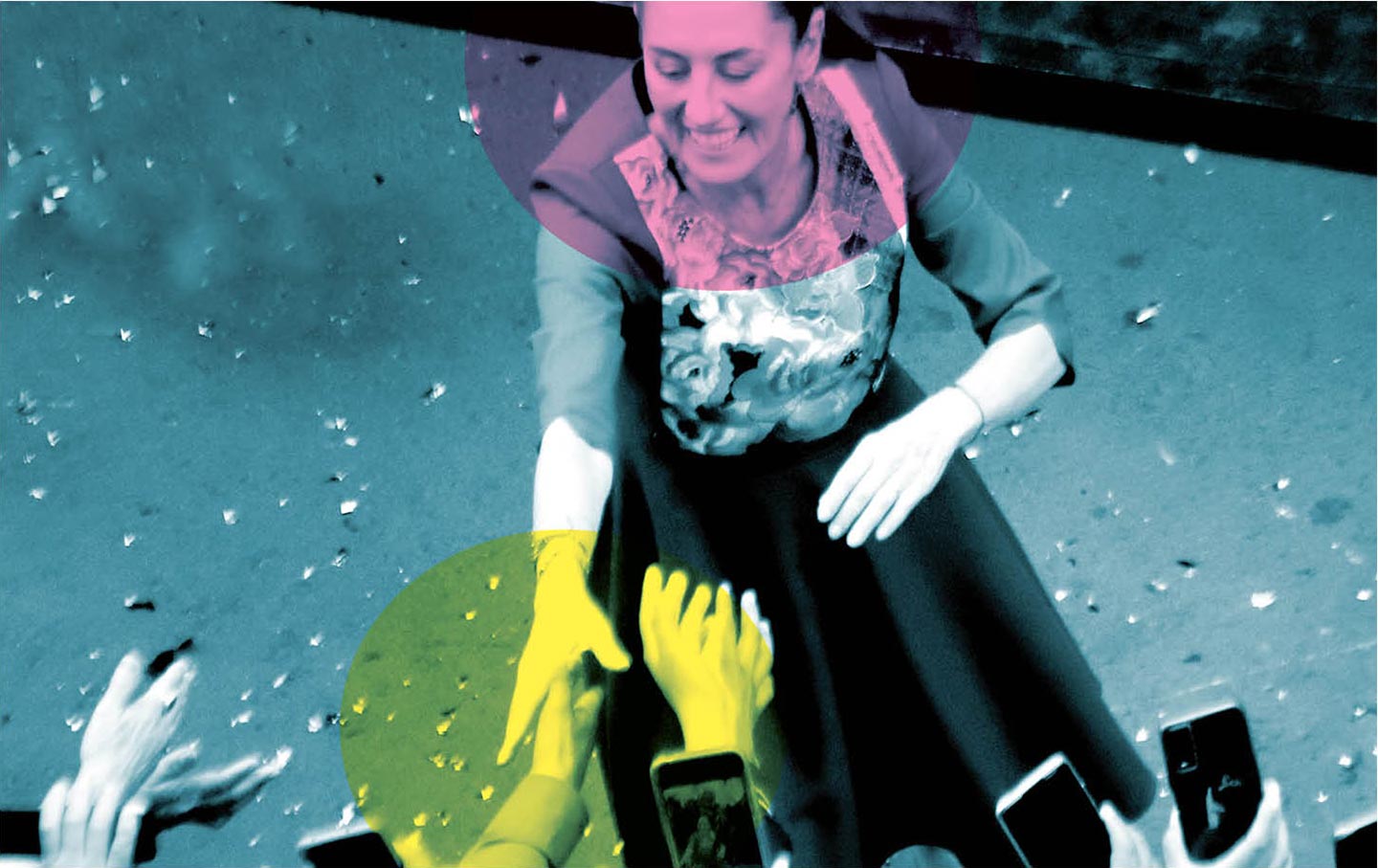
In the center of the photograph is a young woman wearing a kerchief. Alongside a small group of protesters, she holds up a sign that reads, in English, “Fair Trade and Democracy Now.” The protest—the only expression of dissent during Carlos Salinas de Gortari’s triumphal tour of California—took place in September 1991 at Stanford University, where the Mexican president was invited to give a speech. Salinas was at the height of his power. Thirteen months later, he and his fellow North American leaders, US President George H.W. Bush and Canadian Prime Minister Brian Mulroney, would sign the North American Free Trade Agreement into law.
At that moment, Claudia Sheinbaum Pardo, the young woman in the photograph, was driving from her home in Palo Alto, California, to the Lawrence Berkeley National Laboratory, where she was doing research as part of her doctoral studies in energy engineering at the National Autonomous University of Mexico (UNAM). When one of Sheinbaum’s old friends sent me the photo recently, I texted it to her. She wrote back, “Heh, heh. I have the original,” referring to the story published in The Stanford Daily.
Barring unforeseen disaster or a major electoral upset, Sheinbaum, who was born in Mexico City in 1962, will be elected the next president of Mexico on June 2. In 2022 and 2023, I conducted several interviews with her—whenever her schedule as mayor of Mexico City, one of the largest cities in the world, would permit—for my book, Claudia Sheinbaum: Presidenta. On March 1, she launched her presidential campaign and announced her basic platform. But knowing her history, her family, and the roots of her political positions is essential to understanding who she is and how she reached this point—and how she might use her power as president. Sheinbaum’s principal opponent is Xóchitl Gálvez, who represents a coalition made up of the Institutional Revolutionary Party (PRI), the National Action Party (PAN), and the Party of the Democratic Revolution (PRD).
During one of our conversations, I asked Sheinbaum what her life had been like between 1991 and 1994, when she was a graduate student in the United States. “It was a beautiful time,” she said. “We lived in Stanford student housing, in small houses that formed a circle where all the back doors opened onto a garden; our kids lived with children from all over the world. I had a scholarship, so I dedicated myself to doing my doctorate while working and living with the children.”
Sheinbaum and her family, which includes many academics, have a decades-long relationship with the United States. She lived with her then-partner, Carlos Ímaz, who was pursuing a PhD in education at Stanford, and their children, Rodrigo (from her husband’s previous marriage) and Mariana, who was 2 years old when they came to the US and who later returned to study and earn her doctorate in philosophy at the University of Santa Cruz in 2021. Sheinbaum’s sister, Adriana, lives in Los Angeles. Her older brother, Julio, who influenced her decision to study physics, is a physics researcher in Ensenada, in the Mexican border state of Baja California. Sheinbaum recalls that in nearby Redwood City, “they ate the best carnitas,” joking that “all of Aguililla” lives there, referring to the town in Michoacán, a state with one of the highest migration rates in Mexico.
One of her best friends at the time was an economist from Michoacán, Alma González, who crossed the border because she had no job opportunities and “because of the violence,” Sheinbaum explained. Speaking of her friend, Sheinbaum evoked the struggles of many migrants: “She started cleaning houses, and now she works at Stanford Hospital.”
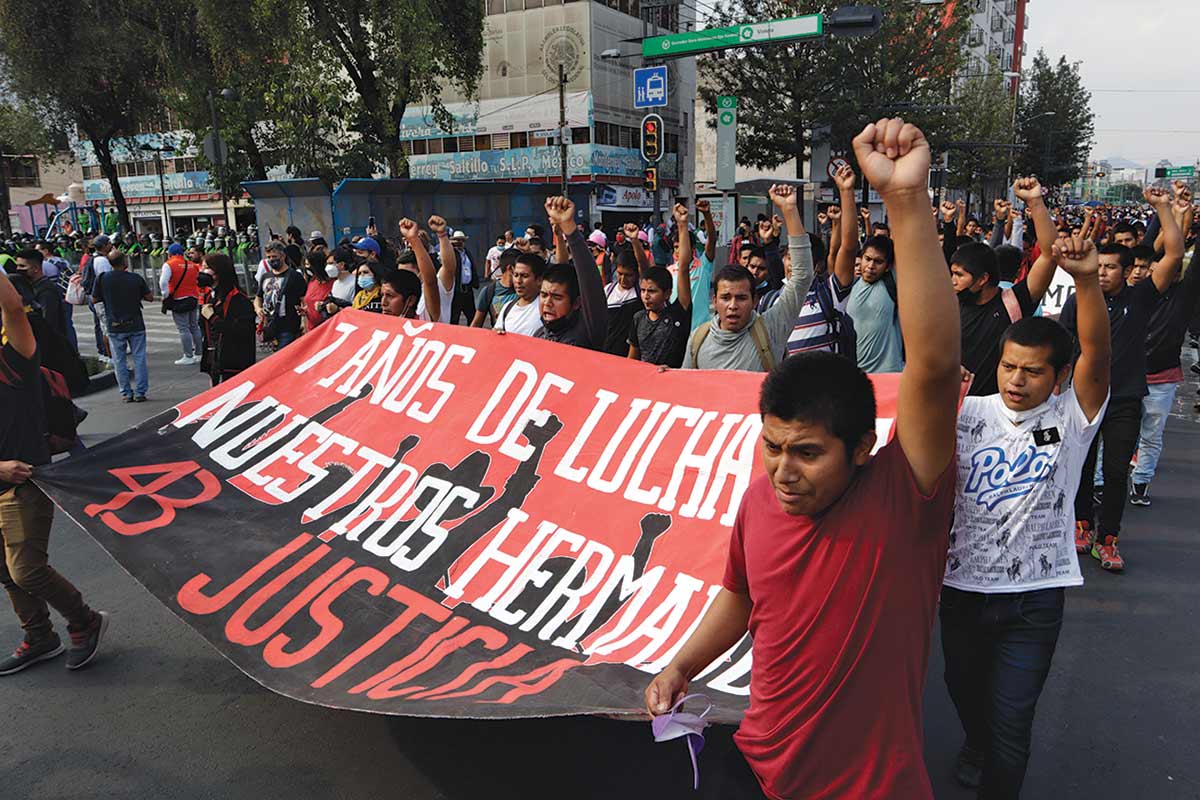
“In my house, politics was discussed at breakfast, lunch, and dinner,” Sheinbaum told me. Her father, Carlos Sheinbaum, a chemist, and her mother, Annie Pardo, a biologist, were involved in the 1968 student movement, which marked a generation and contributed to the erosion of the authoritarian regime of the PRI. For several months in 1968, thousands of young Mexicans marched in the streets, shouting demands that boiled down to two words: democratic freedoms. On October 2, the government of Gustavo Díaz Ordaz brought the movement to an abrupt halt with a massacre in Tlatelolco, when more than 300 students were killed and over 1,000 more arrested.
Some of Sheinbaum’s most vivid childhood memories are of family trips on Sunday to a jail. “We brought the prisoners something to eat,” she said. They regularly visited Raúl Álvarez Garín, one of the main leaders of the youth movement and a friend of Sheinbaum’s mother, who herself had been fired from the National Polytechnic Institute for supporting the students.
Upon his return from a brief exile following his imprisonment, Álvarez Garín and others founded Punto Crítico, a magazine that had been conceived in prison and later gave birth to a movement in which Sheinbaum had her first experience with activism: the Student Committee of Worker-Peasant Solidarity (Comité Estudiantil de Solidaridad Obrero Campesina).
When I asked Sheinbaum about her political mentors, she answered without hesitation: “Apart from my parents, Raúl, of course.” Her peers recall that in 1978, when she was 16, she supported a hunger strike in front of the Metropolitan Cathedral in Mexico City—part of a campaign to support the mothers of young people who had been disappeared during Mexico’s long “dirty war,” which, according to conservative estimates, killed at least 500 people over two decades beginning in the 1960s. It was around this time that she became active in student struggles, the worker solidarity movement, and protests against electoral fraud.
When Sheinbaum took office as the mayor of Mexico City on December 5, 2018, she reflected on these events in her inaugural speech: “It may just be a historical coincidence, but it is still amazing that the national triumph [of President Andrés Manuel López Obrador] and the democratic reconquest of Mexico City is taking place 50 years after the student movement of 1968, and 30 years after the electoral fraud of 1988 [which delivered victory to Salinas]. That is our origin, but our government will be for all.”
Ulises Lara, the Mexico City attorney general, met Sheinbaum when both were in high school. They were at an assembly to organize a march in commemoration of the massacre of dozens of student demonstrators on June 10, 1971 (the “Halconazo,” or “Hawk Strike,” depicted in the film Roma). Sheinbaum objected to the order in which their respective schools were assigned to appear in the march. After Lara cut her off by loudly declaring, “No, compañero, we will march in front,” Sheinbaum replied: “I am a compañera, not a compañero, and my name is Claudia!”
Today, Lara laughs at mistaking her for a boy, recalling that in those days Sheinbaum was “very thin, had short, red, curly [chino] hair, and wore jeans and plaid shirts.”
Sheinbaum attributes her sense of discipline to her scientist mother, who is still active professionally: “She always used to say to us, ‘Sure, you’re going to do other things, but school is school.’”
Sheinbaum attended high school in the mornings and took French and classical ballet in the afternoons. “I was involved in politics, but until my first year of college, I never missed ballet,” she said. After high school, Sheinbaum enrolled at UNAM, where she encountered professors who believed that young people had to tackle major social problems. She studied air pollution in Mexico City and traveled to an Indigenous community in Michoacán to work on a project involving wood-burning stoves that would consume less wood and be less harmful to women’s health. (“We thought we were going to teach a lesson, but we were the ones who learned something,” Sheinbaum said during a visit to that community last March.) Just as she finished her research in Michoacán and began working on her thesis, the university rector announced an increase in tuition fees and other measures that were seen by many young people as steps toward the privatization of Mexican education.
The University Student Council (CEU) was born in response. Thousands of young people filled the streets to protest and, through coordinated strike action, forced the administration into negotiations with the students that eventually brought a halt to the so-called “reforms.” The campaign gave birth to the student slogan “We are the force of reason.”
In 1988, the decades-long hegemony of the PRI was broken when Cuauhtémoc Cárdenas launched his opposition candidacy for the presidency. Many on the left who had never previously participated in elections joined the Cárdenas wave. Sheinbaum hosted meetings in her house to organize a rally for Cárdenas at Ciudad Universitaria, the main UNAM campus—a place that no PRI candidate dared set foot in, particularly after a UNAM protester attempted to throw a stone at former president Luis Echeverría in the 1970s.
Salinas won the election through fraud, but Cárdenas would run again in 1994. A similar rally was held during his second candidacy, although by that time the university movement was committed to supporting the far-left Zapatista Army of National Liberation. A photo of Cárdenas appearing alongside the Zapatista spokesman Subcommandante Marcos during a campaign stop in the Chiapas jungle was circulated with the phrase “Our votes are the weapons of peace,” which became the rallying cry of the student movement.
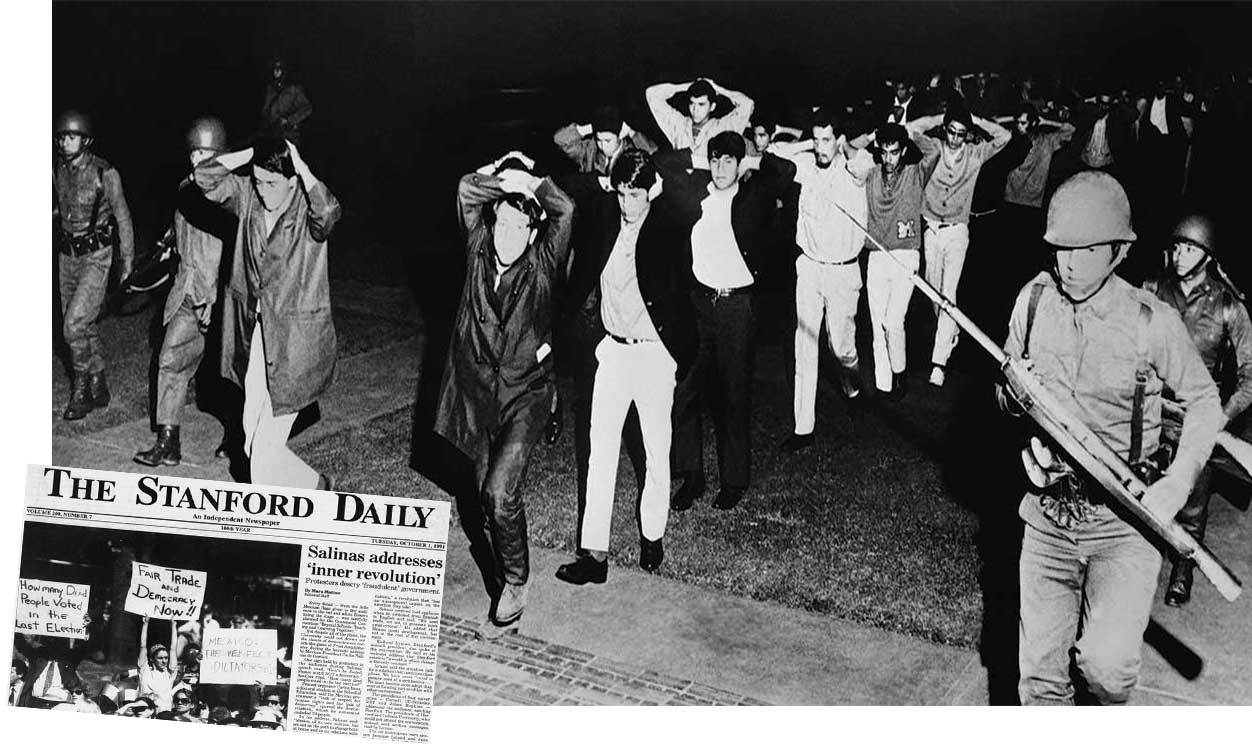
In late December of 2008, the world’s newspapers reported on an Israeli army campaign in Gaza, known as Operation Cast Lead, that resulted in the deaths of 1,400 Palestinians, the majority of them civilians. In a letter published in the newspaper La Jornada, Sheinbaum called for peace there and wrote of her family origins: Her paternal grandparents came to Mexico in the 1920s from Lithuania, which had expelled her grandfather because he was “Jewish and communist”; her maternal grandparents left Bulgaria in the early 1940s “fleeing Nazi persecution.”
Mexico has always been a welcoming destination for refugees fleeing persecution, particularly artists and leftists—whether they were escaping the Spanish Civil War, McCarthyism in the US, or South American dictatorships from the 1970s to the present. Sheinbaum wrote, “Both families decided to make Mexico their homeland. I was raised as a Mexican, loving its history and its people. I am Mexican, and that is why I fight for my homeland. I cannot and do not want to deny my history; to do so would be, as [the Argentine musician] Leon Gieco says, to deny the soul of life.”
Though Sheinbaum’s Jewish heritage has received scant mention on the campaign trail, a small part of the opposition thinks it can score points by attacking her as a “foreigner” or a non-Catholic. Sheinbaum counters that “my mother and father raised us loving Mexico and its history,” as she has said several times.
On July 1, 2018, huge numbers of voters turned out to elect Andrés Manuel López Obrador to the presidency and Sheinbaum as the mayor of Mexico City. López Obrador garnered the widest margin of victory in a Mexican presidential election since the 1980s; meanwhile, Sheinbaum’s victory made her a natural candidate for the next presidential election.
In his most recent book, López Obrador writes that he wanted Sheinbaum to coordinate his campaign and then join his cabinet as secretary of the interior, but that she preferred to pursue the Mexico City mayoralty—despite the fact that internal polls indicated that she wasn’t a front-runner.
Since 1988, the Mexican left has produced only three competitive presidential candidates: Cárdenas, López Obrador, and now Sheinbaum—the only one of the three who was never a member of the PRI.
Popular
“swipe left below to view more authors”Swipe →In February 2024, with the end of his term approaching and with the country caught up in the presidential campaign, López Obrador presented a package of constitutional and legal reforms on issues ranging from the popular election of judges to wage guarantees for workers. Because Sheinbaum has also included these proposals in her program, her critics have charged that the president is trying to set the agenda for his successor.
A Mexican electoral law from 2007 prohibits candidates from formally campaigning before the start of the election season. But even before launching her campaign on March 1, Sheinbaum hinted at the direction her presidency would take by remarking in speeches that her candidacy represents a vote for “continuity with her own stamp.” In November, Sheinbaum presented a list of “dreams,” including issues that have not ranked among López Obrador’s priorities. Her proposals include accelerating the transition to clean energy, reinforcing action to combat climate change, making good on “substantive equality” for women, strengthening LGBTQ rights, and putting “special emphasis” on education.
Between her own accomplishments as mayor and what she has said in the past few months, Mexican voters already have an idea of what a Sheinbaum presidency would look like. In June 2023, as she stepped down from her position as mayor of the nation’s capital to focus on securing the nomination as the presidential candidate of the ruling Movimiento de Regeneración Nacional (Morena) party, Sheinbaum summed up her record as mayor before thousands of people filling a public square.
She recounted her history in a “social struggle [that is] closely linked to the right to education” and then spoke of her political record, emphasizing achievements related to education, public security, public transportation, Internet connectivity, and clean energy—a preview of what the priorities of her national government would be. She touted, for example, the scholarship programs set up for girls and boys in public schools, the creation of more middle schools and two new universities (which serve almost 100,000 formerly excluded students), and the many resources her Mexico City government invested in the improvement of school campuses, as well as the new network of community centers where more than 400,000 residents of Mexico City engage in cultural activities and sports and take courses in financial planning.
Sheinbaum added that during her term there was a 58 percent reduction in “high-impact” crimes (homicides and violent robberies) in the city and that the proportion of the public that felt crime was a major issue dropped from 80 percent to 44 percent, according to figures from the National Institute of Statistics and Geography—trends that are highly significant in a country reeling from decades of violence.
Sheinbaum pointed to measures her administration took to combat violence against women, such as the creation of a specialized prosecutor’s office, new pedestrian paths to promote women’s safety, and a network of female lawyers to promote access to justice and eradicate revictimization.
Sheinbaum was López Obrador’s secretary of the environment when he was mayor of Mexico City. There, the two grew close—so much so that he placed her in charge of an emblematic roadwork project known as the “second floor of the Periférico,” a second-story highway added to a southern section of the Periférico, a major roadway around the perimeter of Mexico City. For that reason, Sheinbaum now speaks of her candidacy as “the second floor of the transformation”—a reference to López Obrador’s “Fourth Transformation,” his way of describing his victory as a revolution in Mexico on par with previous major transformations in the country, including Mexican independence in the early 19th century, the liberal reforms of the 1850s and ’60s, and the Mexican Revolution in the early 20th century. Last September, following a tough contest, Sheinbaum emerged as the Morena party’s candidate, defeating her five competitors, all of whom were men. She received almost 40 percent of the vote; her closest competitor, the former foreign minister Marcelo Ebrard, got 26 percent. López Obrador formalized Sheinbaum’s victory by handing her the traditional Indigenous baston de mando, or staff of authority.
The most common criticism of Sheinbaum is that she is nothing more than a “copy” of López Obrador and that, with her victory, he will continue calling the shots. Those accusations make her laugh, she said: “I have my style, and there are also things on which I don’t agree. Each of us has their own personal style, but we have been fighting in the same movement for the last 23 years. As I often say, ‘What do you all want, that I say ‘First the rich’?”—a reference to the López Obrador slogan “First the Poor,” which Sheinbaum has adopted as her own. “Well, no, I’m not going to say that.”
Lately, Sheinbaum has been touring the country, recruiting people to staff her campaign, and overseeing the electoral lists that will determine Morena’s candidates for the upcoming election. (This year, 95 million Mexicans will vote on more than 19,000 positions for public office.) But it hasn’t all been work. Amid the electoral hoopla, Sheinbaum took time to get married in November 2023 to the mathematician and Bank of Mexico risk analyst Jesús Tarriba, an old college sweetheart with whom she was reunited after her divorce in 2016.
Sheinbaum wrestles with the paradox of being a self-proclaimed “daughter of ‘68” while also bringing aboard members from the “old regime,” as the obradoristas like to call members of the PRI and PAN. That list includes politicians who just months ago were harsh critics of the government and even voted against its bills in Congress. But she’s working hard to create the electoral majority she will need to govern effectively. As the conventional wisdom in Mexico goes, she will need to negotiate and obtain votes from the opposition to achieve reforms that López Obrador was unable to achieve himself. “Adding more numbers” has become her campaign motto.
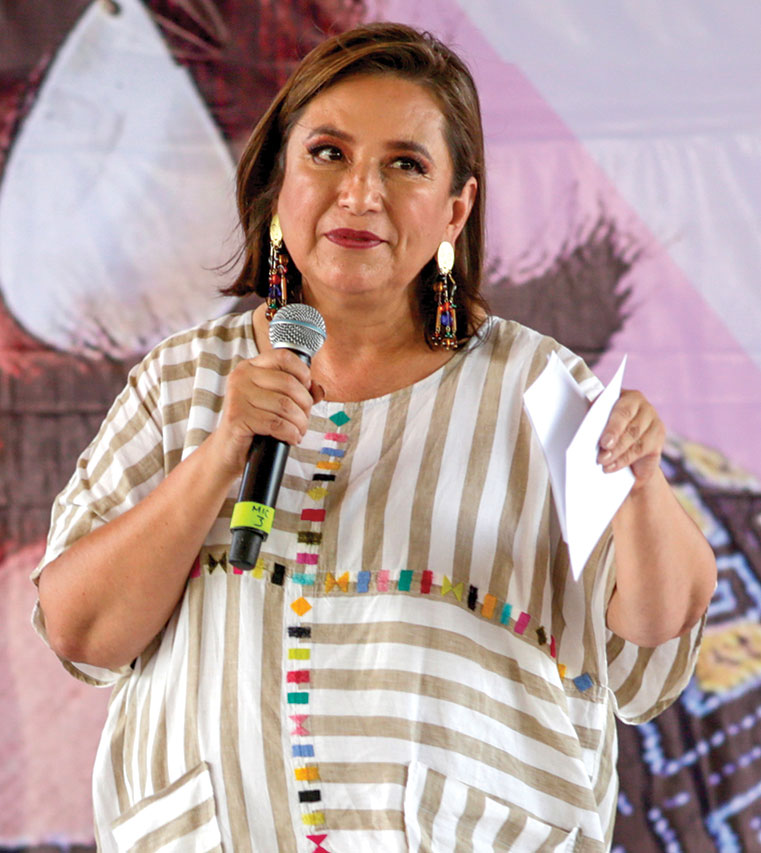
Sheinbaum will face Xóchitl Gálvez, the candidate of a peculiar bloc that obradoristas call the “PRIAN” because, in effect, it unites the PRI, the party that ruled the country for nearly 80 years, and the right-wing PAN, a party that emerged in 1939 and won presidential elections in 2000 and 2006—two forces that have traditionally been at odds but are now united to defeat López Obrador’s supposed “authoritarianism.” Gálvez, a businesswoman and politician of Indigenous origin, was chosen partly because her profile would make it difficult to label her a member of the “power mafia” run by white, privileged Mexicans. Sheinbaum has consistently held the lead in polls (64 percent for her versus 31 percent for Gálvez, according to an average of polls published since the beginning of February).
Leticia Gutiérrez Lorandi, Sheinbaum’s former general director of policy coordination and environmental culture in the mayor’s office and the mother of two daughters, ages 5 and 8, is excited by the prospect of a woman as Mexico’s leader. “My little purple balloon is in the sky,” she said, referring to the color long associated with the feminist struggle. “When I was a child, it was just normal for those politicians to be men.”
Sheinbaum’s campaign is aware that a left-wing politician can face charges of being an extremist or an enemy of the United States. But with respect to US-Mexican relations, in the rally to kick off her campaign, Sheinbaum summarized her intentions: “The relationship with the US must be one of respect without subordination.”
Diana Alarcón, who served in the mayor’s office as Sheinbaum’s chief adviser and international affairs coordinator and who holds a PhD in economics from the University of California, Riverside, has organized Sheinbaum’s trips to the United States. “What we want is investment and trade that provides for better wages, innovation and technology, regional development, and environmental sustainability,” Alarcón said. “What we do not want are low-wage jobs, nor are we going to sell Mexico as a maquiladora country.”
In several speeches, Sheinbaum has underlined the continuity between herself and López Obrador on key issues in the US-Mexico relationship, including migration, arms and drug trafficking, and border security. The implication is clear: The two countries have shared problems and must grow closer to figure out how to solve them.
When I asked Sheinbaum whether she would endorse the statement that Dilma Rousseff used to inaugurate her term as Brazil’s first female president—“I am here to protect the weak, honor women, and govern for all”—she said yes. “There are many parallels between Dilma Rousseff and you,” I continued, perhaps forgetting that Rousseff—who followed her own mentor into office—had her term cut short by an impeachment on corruption charges.
With the laugh of someone who knows how to take serious matters with a touch of levity, Sheinbaum replied, “I hope my story has a different ending.”
Hold the powerful to account by supporting The Nation
The chaos and cruelty of the Trump administration reaches new lows each week.
Trump’s catastrophic “Liberation Day” has wreaked havoc on the world economy and set up yet another constitutional crisis at home. Plainclothes officers continue to abduct university students off the streets. So-called “enemy aliens” are flown abroad to a mega prison against the orders of the courts. And Signalgate promises to be the first of many incompetence scandals that expose the brutal violence at the core of the American empire.
At a time when elite universities, powerful law firms, and influential media outlets are capitulating to Trump’s intimidation, The Nation is more determined than ever before to hold the powerful to account.
In just the last month, we’ve published reporting on how Trump outsources his mass deportation agenda to other countries, exposed the administration’s appeal to obscure laws to carry out its repressive agenda, and amplified the voices of brave student activists targeted by universities.
We also continue to tell the stories of those who fight back against Trump and Musk, whether on the streets in growing protest movements, in town halls across the country, or in critical state elections—like Wisconsin’s recent state Supreme Court race—that provide a model for resisting Trumpism and prove that Musk can’t buy our democracy.
This is the journalism that matters in 2025. But we can’t do this without you. As a reader-supported publication, we rely on the support of generous donors. Please, help make our essential independent journalism possible with a donation today.
In solidarity,
The Editors
The Nation

